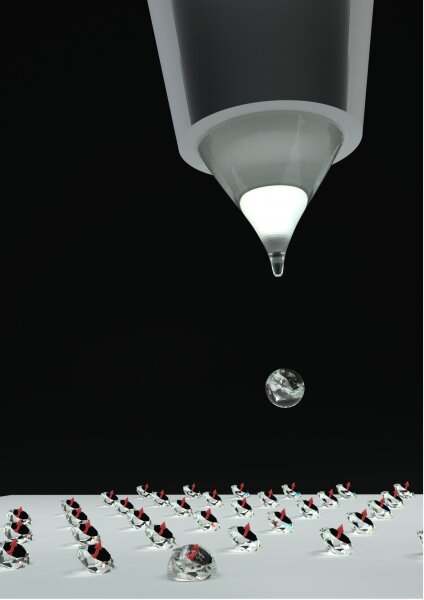Scientists at EPFL and IBM Research Europe report experiments in which mechanical vibration is reduced close to the ultimate limit given by the laws of quantum mechanics. The work represents a breakthrough in the manipulation of a mechanical device with light. It opens the door to a multitude of applications in quantum science that could have significant impact on fields as diverse as computing and sensing.
Advances in the ability to control and manipulate physical systems often underly a leap forward in technology. For emerging quantum technologies, such as quantum computers or quantum sensors (devices that exploit the weirdness of quantum mechanics to perform feats impossible by classical means), a crucial aspect of this control is the initialization of the system in its ground state, where the energy is reduced to the so-called zero-point energy and all prior environmental noise is removed.
Relative newcomers in the quantum arena are mechanical oscillators. Despite their size, even macroscopic vibrating objects can exhibit quantum effects, provided that they can be sufficiently isolated from the noisy environment and can be cooled close to their ground state. Such mechanical systems are promising alternatives for providing important functionalities, for example for storage of quantum information and for sensing of tiny forces. Consequently, much effort has been made in recent years to develop better methods for cooling of mechanical systems. The most effective approach has been to manipulate the vibrations by exerting radiation pressure with a laser—i.e. by applying tiny kicks from photons that can interact with the oscillator.
Now scientists at EPFL and IBM Research Europe have demonstrated laser cooling of a gigahertz vibrational mode in a silicon nano-beam to a level of 92% ground state occupation, more than previously achieved with such techniques with any other engineered mechanical system. The silicon nanobeam device, known in the community as an optomechanical crystal, is fabricated on a chip and compatible with other quantum technologies such as superconducting circuits. It is carefully designed to co-host a long-lived, localized optical mode overlapping the vibrational mode. Laser light injected into the nanobeam thus leads to cooling.
Importantly, to verify the low effective temperature of the vibration, the researchers used quantum thermometry, which is a technique that exploits the fact that the oscillator’s ability to emit light decreases as it approaches the ground state, in contrast to its ability to absorb light. This enables unequivocal calibration of the thermal state using the laws of quantum mechanics alone, and eliminates the need for external temperature calibration, which can be problematic when high local precision is needed.
Although high ground-state occupation was previously achieved in systems that work at microwave wavelengths and in optical systems by simply reducing the temperature of the environment to extremely low milli-Kelvin temperatures, a distinctive advantage in the experiment from EPFL and IBM is that the mechanical oscillator can be strongly interrogated by optical means. The results thus herald a new level of control of mechanical motion in the quantum regime and open the door to a host of quantum experiments, such as generation of nontrivial mechanical quantum states as well as efficient transduction of quantum information between optical photons and superconducting qubits.
The paper has been published in the journal Physical Review Letters.



